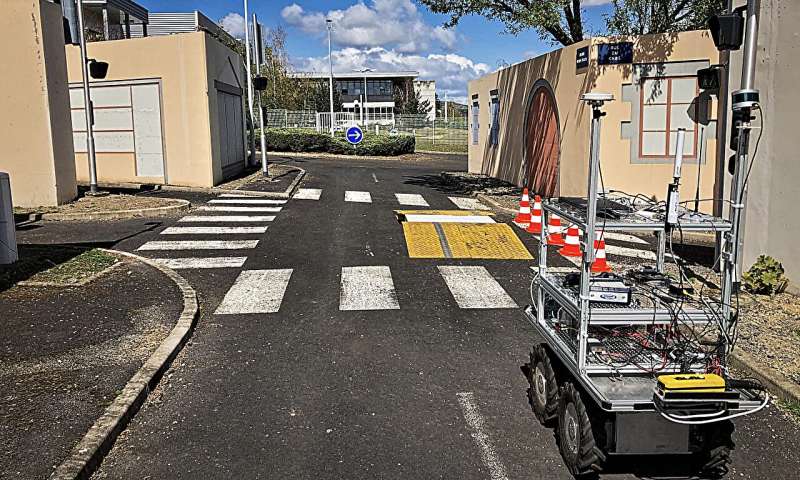September 20, 2023 feature
This article has been reviewed according to Science X's editorial process and policies. Editors have highlighted the following attributes while ensuring the content's credibility:
fact-checked
preprint
trusted source
proofread
A framework for risk-aware robot navigation in unknown environments

Mobile robots have become increasingly sophisticated and are now being deployed in a growing number of real-world environments, including airports, malls, museums, health care facilities and other settings. So far, however, most of these robots have been introduced in clearly defined indoor environments, as opposed to completing missions that would require them to travel across the city or explore unknown and unmapped spaces.
Allowing robots to effectively navigate three-dimensional (3D) unknown environments could broaden their practical applications. For instance, it could facilitate their use for delivering parcels, monitoring new environments or natural settings and moving on roads in crowded urban environments.
A research team at Université Clermont Auvergne, CNRS and University of Toronto Institute of Aerospace Studies (UTIAS) recently set out to develop a framework that could significantly improve the ability of robots to safely navigate unknown 3D environments. Their framework, introduced in a paper published on the preprint server arXiv, builds on one of their previous papers, where they introduced Lambda-field, a new approach for assessing the risk of collisions and identify safe navigation paths.
In their previous work, the team only applied their framework in two-dimensional, simulated environments. As part of their new study, on the other hand, they wished to adapt it and enable its use in unknown 3D environments containing obstacles.
"Conventionally, navigation risk has been focused on mitigating collisions with obstacles, neglecting the varying degrees of harm that collisions can cause," Elie Randriamiarintsoa, Johann Laconte and their colleagues wrote in their paper.
"In this context, we propose a new risk-aware navigation framework, whose purpose is to directly handle interactions with the environment, including those involving minor collisions. We introduce a physically interpretable risk function that quantifies the maximum potential energy that the robot wheels absorb as a result of a collision,"
The framework developed by the team allows robots to assess the risk associated with taking specific routes, while also taking obstacles nearby into account. In addition, they introduced a new risk-aware path planning algorithm based on a mathematical approach.
"By considering this physical risk in navigation, our approach significantly broadens the spectrum of situations that the robot can undertake, such as speed bumps or small road curbs," the researchers wrote in their paper. "Using this framework, we are able to plan safe trajectories that not only ensure safety but also actively address the risks arising from interactions with the environment."
So far, the researchers evaluated their framework for risk-aware navigation in a series of simulations, using footage and image data collected in real-world urban environments. They found that while their approach could mimic standard path planning techniques, it was sometimes also able to identify paths that passed over obstacles, if the risk was tolerable.
In their next studies, Randriamiarintsoa, Laconte and their colleagues plan to improve their framework's path planning component and risk metrics, while also testing it in larger experiments in both urban and rural environments. This recent work could soon inspire other teams to develop and evaluate similar techniques, which could collectively facilitate the broader use of mobile robots in real-world settings.
"We intend to extend our framework to enable the robot to perform long-term missions," the researchers conclude in their paper. "Furthermore, we will conduct extensive experiments on the framework, incorporating quantitative evaluations. Finally, we will investigate the possibility of adding several risks to further constrain the path-planning algorithm, such as the risk of crossing a continuous lane marking."
More information: Elie Randriamiarintsoa et al, Risk-Aware Navigation for Mobile Robots in Unknown 3D Environments, arXiv (2023). DOI: 10.48550/arxiv.2309.02939
© 2023 Science X Network

















